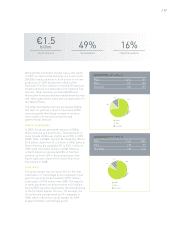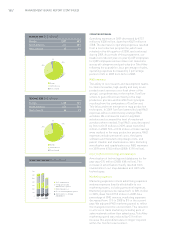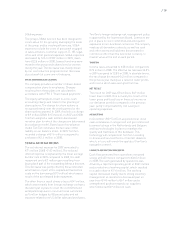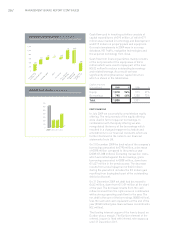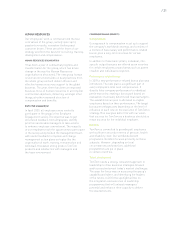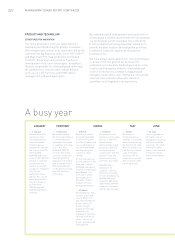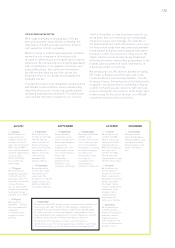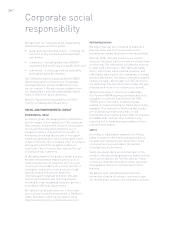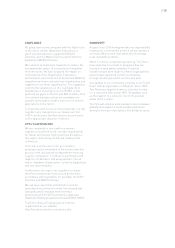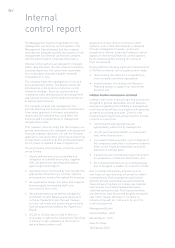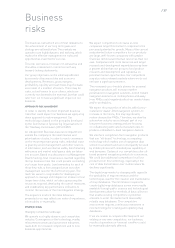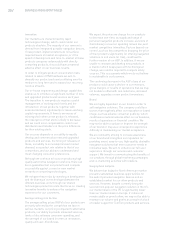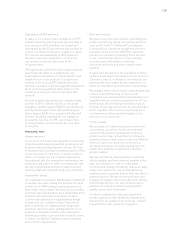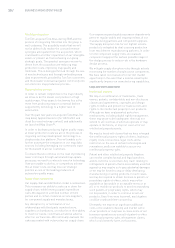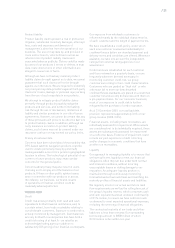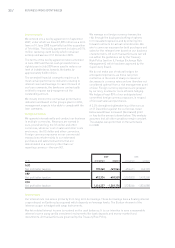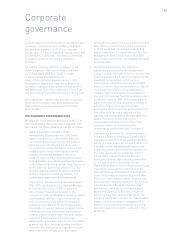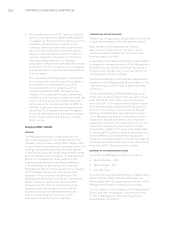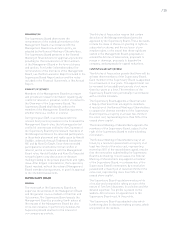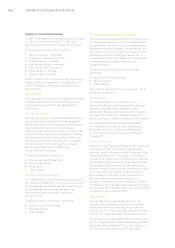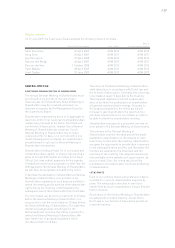TomTom 2009 Annual Report Download - page 29
Download and view the complete annual report
Please find page 29 of the 2009 TomTom annual report below. You can navigate through the pages in the report by either clicking on the pages listed below, or by using the keyword search tool below to find specific information within the annual report./ 27
The business risks which are of most relevance to
the achievement of our long term goals and
strategy are outlined below. The markets we
operate in are highly dynamic and evolving, which
makes the effective management of risks and
opportunities essential for success.
This risk overview is, however, not exhaustive and
should be considered in connection with any
forward-looking statements.
Our group objectives can be adversely affected
by a variety of business risks and economic
developments. Revenues, gross margins,
profitability, liquidity and cash flows may fluctuate
as a result of a number of factors. There may be
risks, not yet known to us or others, which are
currently not deemed to be material, but that could
later turn out to have a significant impact on our
business.
APPROACH TO RISK MANAGEMENT
In order to identify the most important business
risks that could impact our business we apply a top
down approach to risk management. Our
methodology is based on the principles developed
by the Committee of Sponsoring Organisations of
the Treadway Commission (COSO ERM).
An independent Business Assurance department
assists the company in the identification and
prioritisation of risks. In order to reach consensus
on the most important group risks, individual input
is given by senior management, and other sources
of information, such as internal audits, benchmarking
with peers and market intelligence data are taken
into account. Based on a discussion in a Management
Board meeting, final consensus is reached regarding
the top business risks that could prevent us meeting
our longer term goals. Lead ownership for each of
these key risks is then assigned at an executive
management level for the forthcoming year. The
lead risk owner is responsible for developing an
approach to manage and mitigate our mission critical
longer term risks, which includes sponsoring the
resources required, developing the control measures
and establishing key performance indicators to
monitor the success of the risk mitigation strategy.
The sequence in which the risks below are
presented in no way reflects an order of importance,
vulnerability or materiality.
STRATEGIC RISKS
Changing competitive landscape
We operate in a highly dynamic and competitive
industry. Convergence in the technology, media,
telecommunications and automotive industries
leads both to increased competition and to new
business opportunities.
We expect competition to increase as new
companies target this market in response to the
perceived potential for growth. Many of the current
and potential future competitors for our products
are large, well-known companies with greater
financial, technical and human resources than our
own. Companies with more resources and larger
research and development expenditures may have
a greater ability than our group to fund product
research and development and capitalise on
potential market opportunities. Our competitors
may also enter relevant markets where we do not
yet have a significant presence.
The increased use of mobile phones for personal
navigation products will increase market
penetration for navigation solutions. A shift toward
navigation solutions on mobile phones and away
from PNDs could negatively affect our market share
and/or profitability.
We expect the proportion of vehicles with factory-
installed or dealer-fitted navigation systems to
increase in the future, this may significantly
reduce demand for PNDs. Therefore, we view the
automotive industry as an integral part of our
long term business strategy and are focusing
on collaborating with vehicle manufacturers to
produce embedded in-dash navigation devices.
We also face competition from navigation products
that use “off-board” technology, a competing
technology which makes use of navigation data
stored on a network and can consequently be used
by mobile phones with installed java capability or
web browsers. Certain of our competitors offer off-
board personal navigation products to consumers.
We could face additional competition for all our
products from this technology, especially if the
cost of data transmission over mobile networks
declines significantly.
The digital map market is changing with regard to
the availability of map information and the
technologies used for the creation and maintenance
of map databases. The information required to
create digital map databases is now more readily
available through public sources and technological
developments allow for methods of data collection
that enable existing competitors or potential
entrants to enter the market with reasonably
reliable map databases. This competitive
environment requires continuous investment in
new technology for creating and updating map
databases.
If we are unable to compete effectively with our
existing or any new competitors, our business,
results of operations or financial condition could
be materially adversely affected.
Business
risks


